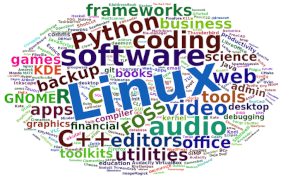Last Updated on April 22, 2022
Emulation is the practice of using a program (called an emulator) on a PC to mimic the behaviour of a home computer or a video game console, in order to play (usually retro) games on a computer.
Home computers were a class of microcomputers that entered the market in 1977 and became common during the 1980s. They were marketed to consumers as affordable and accessible computers that, for the first time, were intended for the use of a single non-technical user.
Back in the 1980s, home computers came to the forefront of teenagers’ minds. Specifically, the Amiga, ZX Spectrum, and Atari ST were extremely popular. They were hugely popular home computers targeted heavily towards games, but they also ran other types of software.
The Oric-1 is a home computer that appeared in 1983 and was sold mainly in the UK and France. It was made by the British computer manufacturer Tangerine Computer Systems. The Oric-1 was the successor to the Microtan 65 and the predecessor of the Oric Atmos.
The Oric-1 is based on the 8-bit processor 6502A with 1 MHz clock frequency and was offered in two versions with 16 KB and 48 KB RAM. The graphics resolution is 38 × 27 characters in text mode and 240 × 200 pixels in graphics mode, with eight colors being displayed. Sound was fairly impressive with the computer using the AY-3-8912, a 3-voice programmable sound generator offering a range of 7 octaves and a noise generator. The Oric includes four predefined sound effects (ZAP, PING, SHOOT, EXPLODE). A loudspeaker is built in.
Oric ROM
The operating system with the basic interpreter Oric Extended Basic, a Microsoft BASIC V1.0, is housed in a 16 KB ROM chip.
Recommended Open Source Emulators
Clock Signal is a high quality open source emulator. It supports a wide number of home computers including the Oric-1, Oric Atmos and Pravetz 8D. Through static and runtime analysis CLK seeks automatically to select and configure the appropriate machine to run any provided disk, tape or ROM; to issue any commands necessary to run the software contained on the disk, tape or ROM; and to provide accelerated loading where feasible.
Clock Signal requires the user to provide images of the system ROMs. Unlike other emulators, you need an Oric colour ROM (a tiny palette file), in addition to the ROM providing the operating system (with Basic). You’ll also need other ROMs depending on what you want to emulator such as the Oric Microdisc ROM.
Clock Signal is available in 2 versions: a graphical Qt version and a Simple DirectMedia Layer (SDL) version. It’s by far the best emulator for the Oric home computers under Linux.
Another emulator to try is Oricutron. Unlike Clock Signal, the developer has decided to include all the ROMs, although it doesn’t provide the colour ROM currently required (but not used) by Clock Signal.
Oric games
Compared to the hugely successful ZX Spectrum and Commodore 64, the Oric-1 had a brief commercial life with only a small range of games published. This was not surprising considering less than 100,000 units were sold.
While the Oric range was not a commercial success, there were some real gems developed. Notable titles include Xenon 1, Zorgan’s Revenge, and Don’t Press the Letter Q. The ubiquitous Manic Miner was also ported to the machine.
| Home Computers | |
|---|---|
| Amiga | Family of personal computers introduced by Commodore in 1985 |
| Amstrad CPC | Combined the computer, keyboard and data storage in a single unit |
| Atari ST | A popular line of personal computers from Atari Corporation |
| BBC Micro | Series of computers designed and built by Acorn |
| Commodore 64 | Hugely popular home computer |
| Dragon | Built around the Motorola MC6809E processor running at 0.89 MHz |
| Electron | A microcomputer sported a Synterek SY6502A CPU clocked at 2MHz |
| MSX | A popular range particularly in Japan |
| Oric | The underrated Oric-1 and Oric Atmos |
| QL | Based on a Motorola 68008 CPU clocked at 7.5 MHz with 128KB of RAM |
| TRS-80 | Very early mass-produced and mass-marketed retail home computers |
| VIC-20 | 8-bit home computer that was released in 1980/1 |
| ZX80 | Predecessor to the ZX81; ignited the UK's home computer market |
| ZX81 | Low-cost introduction to home computing notorious for its RAM pack wobble |
| ZX Spectrum | One of the biggest selling home computers |
 Read our complete collection of recommended free and open source software. Our curated compilation covers all categories of software. Read our complete collection of recommended free and open source software. Our curated compilation covers all categories of software. Spotted a useful open source Linux program not covered on our site? Please let us know by completing this form. The software collection forms part of our series of informative articles for Linux enthusiasts. There are hundreds of in-depth reviews, open source alternatives to proprietary software from large corporations like Google, Microsoft, Apple, Adobe, IBM, Cisco, Oracle, and Autodesk. There are also fun things to try, hardware, free programming books and tutorials, and much more. |
